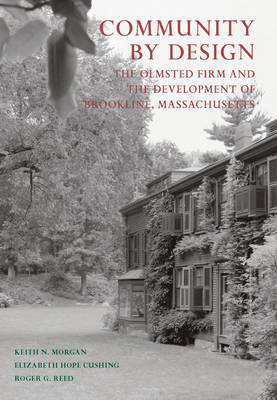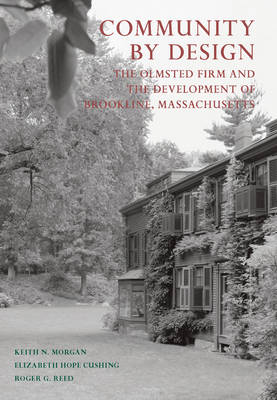
- Afhalen na 1 uur in een winkel met voorraad
- Gratis thuislevering in België vanaf € 30
- Ruim aanbod met 7 miljoen producten
- Afhalen na 1 uur in een winkel met voorraad
- Gratis thuislevering in België vanaf € 30
- Ruim aanbod met 7 miljoen producten
Zoeken
Community by Design
The Olmsted Firm and the Development of Brookline, Massachusetts
Keith Morgan, Elizabeth Hope Cushing, Roger Reed
Hardcover | Engels
€ 44,45
+ 88 punten
Omschrijving
In 1883, Frederick Law Olmsted Sr. moved from New York City to Brookline, Massachusetts, a Boston suburb that anointed itself the "richest town in the world." For the next half century, until his son Frederick Law Olmsted Jr. relocated to California in 1936, the Olmsted firm received over 150 local commissions, serving as the dominant force in the planned development of this community. From Fairsted, the Olmsteds' Brookline home and office, the firm collaborated with an impressive galaxy of suburban neighbors who were among the regional and national leaders in the fields of architecture and horticulture, among them Henry Hobson Richardson and Charles Sprague Sargent. Through plans for boulevards and parkways, residential subdivisions, institutional commissions, and private gardens, the Olmsted firm carefully guided the development of the town, as they designed cities and suburbs across America. While Olmsted Sr. used landscape architecture as his vehicle for development, his son and namesake saw Brookline as grounds for experiment in the new profession of city and regional planning, a field that he was helping to define and lead. Little has been published on the importance of Brookline as a laboratory and model for the Olmsted firm's work. This beautifully illustrated book provides important new perspective on the history of planning in the United States and illuminates an aspect of the Olmsted office that has not been well understood. Published in association with Library of American Landscape History: http: //lalh.org/
Specificaties
Betrokkenen
- Auteur(s):
- Uitgeverij:
Inhoud
- Aantal bladzijden:
- 302
- Taal:
- Engels
Eigenschappen
- Productcode (EAN):
- 9781558499768
- Verschijningsdatum:
- 5/02/2013
- Uitvoering:
- Hardcover
- Formaat:
- Genaaid
- Afmetingen:
- 185 mm x 259 mm
- Gewicht:
- 961 g

Alleen bij Standaard Boekhandel
+ 88 punten op je klantenkaart van Standaard Boekhandel
Beoordelingen
We publiceren alleen reviews die voldoen aan de voorwaarden voor reviews. Bekijk onze voorwaarden voor reviews.











